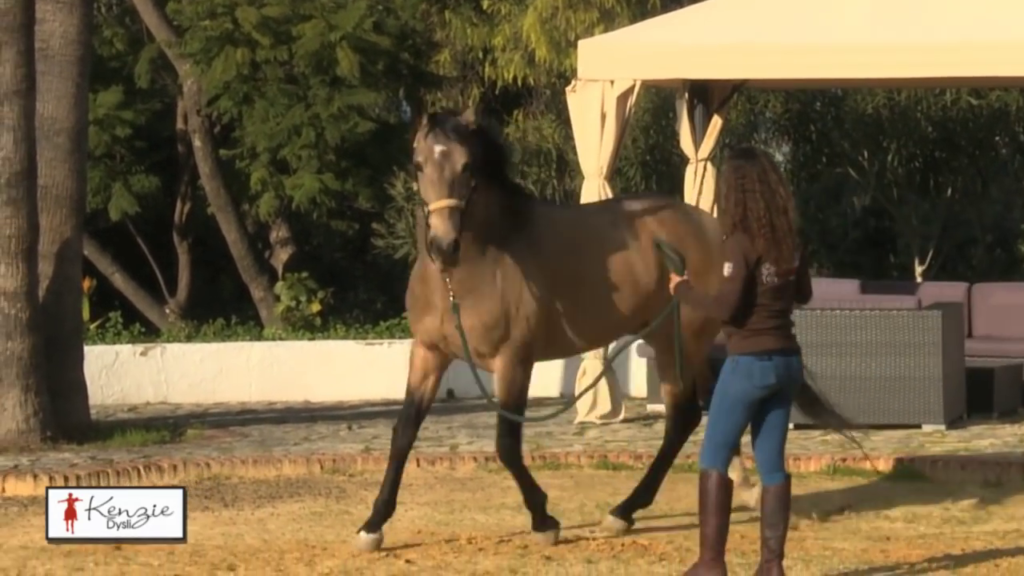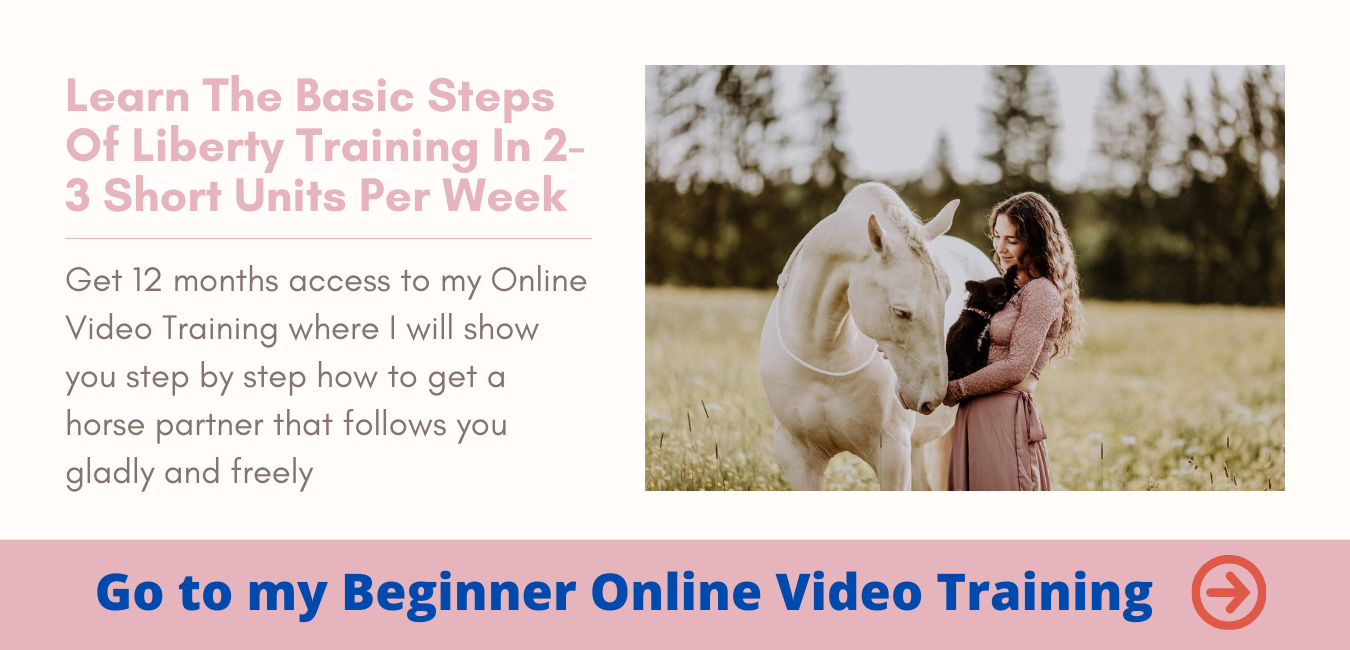Why are circling and the lead position so important in free work? Have you noticed how much it helps to always be able to look your horse in the face?
Recognize emotions & “read” your horse
I think that you can judge your horse so much better – because you can see what is going on in the eye and out of the corner of your eye you can even observe the ear play.
If your horse finds something scary in this position, you can react directly and look together with him whether the situation is really scary, calm him down or secure him quickly in the free work.
A small tip on the side:
The more rarely your horse has the experience of being able to run away in free work, the more confidently free training will work with your horse. For training in such a situation, it helps to have a neck ring that you can always reach into when things get tricky.
Playing it safe
For this reason, use a knotted halter and rope for the first time, just as you do for the lead exercises – until your horse has learned what you want him to do.
Because apart from the fact that your horse can’t have the experience of evading the exercise by running away, you can explain to your horse much better what you want from him, especially at the beginning, through impulses on the knotted halter.
Balance & Bending
Many horses do not find it easy to walk around you on a small circle. In the best case they have to bend their whole body – and that is quite exhausting for your horse!
So, especially with young and older horses, pay attention to what they can physically do and how supple and flexible they are. Increase the size of the circle if your horse can’t hold it!
You as a fixed center
I actually stay really fixed on one point when circling around me. That way my horse circles centered around me, which has proven to be an advantage in the past.
However, if your horse is really struggling, you can follow along a little more in the beginning or leave the rope a little longer. Which way is better for you and your horse is up to you to decide, as both options have advantages and disadvantages.
If the distance between you and your horse is longer, for example, you no longer have your horse in your “sphere of influence” and impulses – especially in an emergency – are less likely to be received if you cannot touch your horse.
If possible, try to stand still and turn only with your horse. The horse should now at all times keep the “feel-good zone” that you have installed while leading, also on the circle track.
By the way, most horses try to “drift away” to the outside at the beginning. Don’t hold this against your horse – this small circle is really exhausting, especially in trot and canter.
So always practice in intervals and give your horse breaks in between.
This way he will gain strength and gradually build up the necessary muscles to walk around you in a really curved way on the narrow circle.
The correct bend
Make sure your horse goes around you as correctly as possible from the start. This means that it should be bent inwards towards you.
The horse’s head should be turned inwards – this is not only valuable for gymnastics, but also ensures that your horse keeps his attention on you.
If your horse looks at you with his eyes turned towards you and also “listens to you” with his inner ear, you are doing everything right. It would be perfect if your horse does not fall on the inner shoulder but lifts it so that a real and correct bend is created.
Then nothing stands in the way of circling around you! You will see that circling at a trot and later at a canter is much more difficult than at a walk, but with a little patience your horse will soon be circling around you just as safely!
With gentle impulses on the rope you can always remind your horse to turn his head inwards when he leaves the bend or when his attention wanes. Or you can send him further away from you with a hand movement in the direction of the eye.
In my video I show you how this can look in the end.
[su_youtube url=”https://youtu.be/yVd17hN05T8″]
Please keep in mind that the way from the beginnings to the free circling will take some time and do not rush. Your work on the “foundation” will pay off later in any case!
Always remember to train this exercise in intervals and to provide regular breaks and variety.
Because so your horse remains directly motivated and also makes an effort in the long term ? Have fun trying!
Your Kenzie
PS: Please be sure BEFORE this exercise that your horse has no health restrictions (eg arthritis, etc.) and also consider stiffness or tension on a larger circle!




